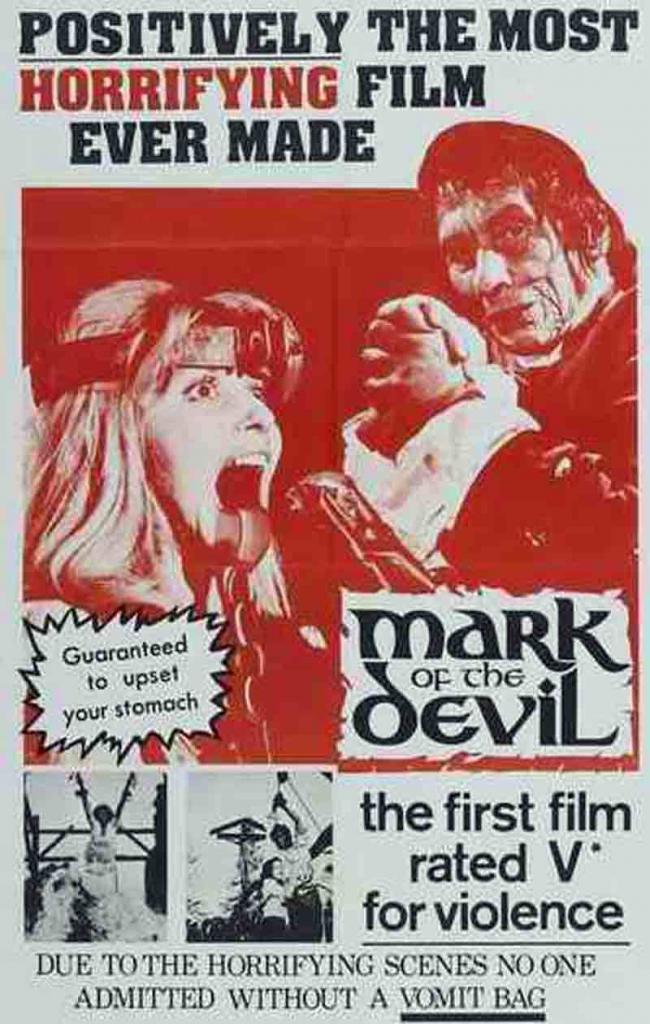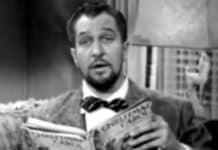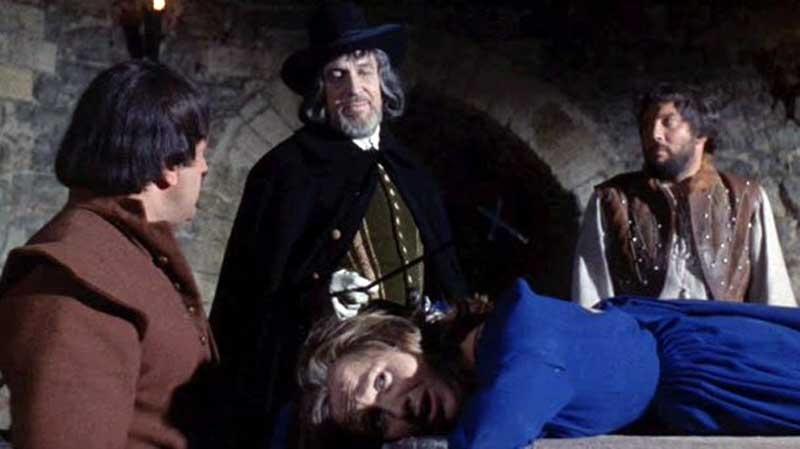
With its graphic scenes of hanging, drowning and burning, and stark themes on religious fanaticism and the abuse of power, 1968’s Witchfinder General was one of the most controversial British films in its day.
And it very quickly gained legendary status owing to the early tragic death of its writer/director Michael Reeves.
Here are PETER FULLER’s 20 things you need to know about this cult classic.
1. This film was inspired by a 1966 novel by Ronald Bassett
The rights to Bassett’s historical novel was picked up by Tigon producer Tony Tenser, who had just completed The Sorcerers starring Boris Karloff and directed by Michael Reeves, a bright up-and-coming 24-year-old film-maker.
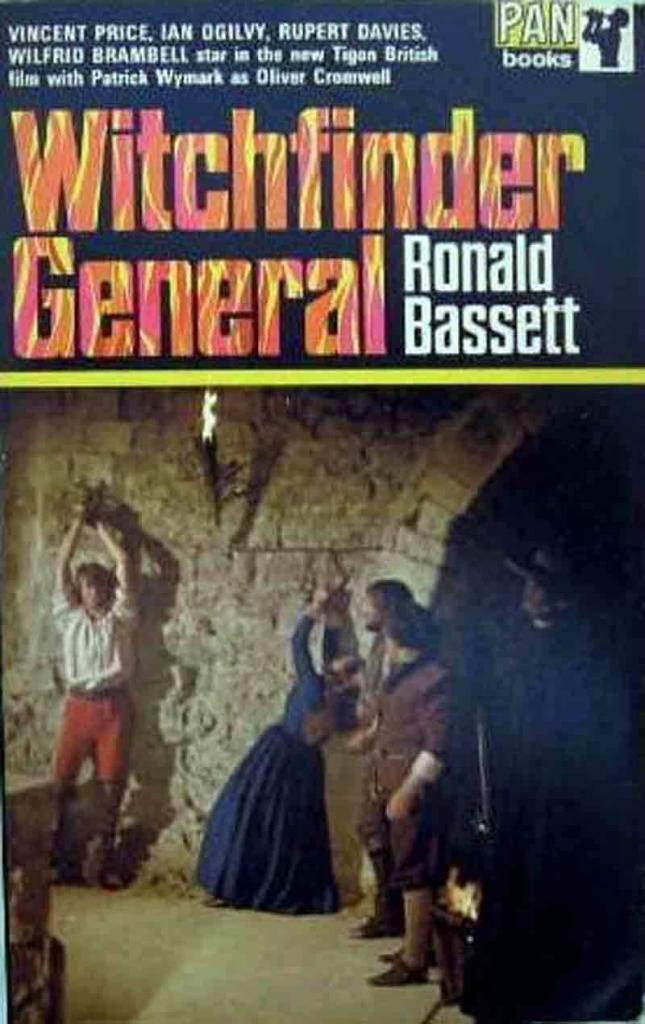
Along with his pal Tom Baker (not the actor one), Reeves turned Bassett’s novel into a screenplay, making quite a few changes along the way, but keeping the essential characters that would appear in the film.
2. There really was a Witchfinder General
Around 1645, Matthew Hopkins (1620–1647) made a profitable career in witch hunting throughout Suffolk, Essex and Norfolk, charging 20 shillings per town for his services (that’s around £20 in today’s money).
He is believed to have been responsible for the deaths of 300 women over the course of two years.
Unlike the gruesome demise he is given in the film, the former lawyer died at his home in Manningtree, Essex, on 12 August 1647, most probably from pleural tuberculosis.
3. Hopkins’ torture methods are still in used today
During his two–year reign ‘preying on the fears of simple minded village folk’, supported by his second-in-command John Stearne (1610-1670), Hopkins extracted confessions using methods of physical torture such as ‘pricking’ for dead spots as a sign of the third nipple and ducking.
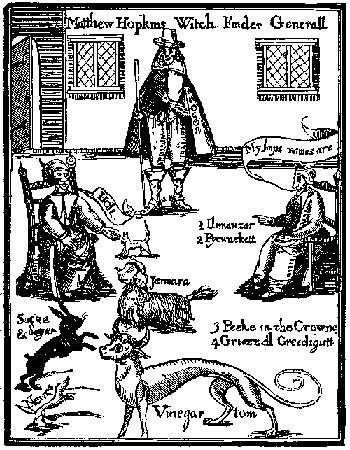
The other method was sleep deprivation, which is very much in use today, along with water boarding, an inhuman variation on ducking.
There’s no evidence, however, that any of the victims were burned at the stake – instead they were simply hanged to the nearest tree.
4. The real Witchfinder General, Hopkins, was himself suspected of being in league with the Devil
Hopkins ended up having to defend his reputation in print in 1645, called The Discovery of Witches.
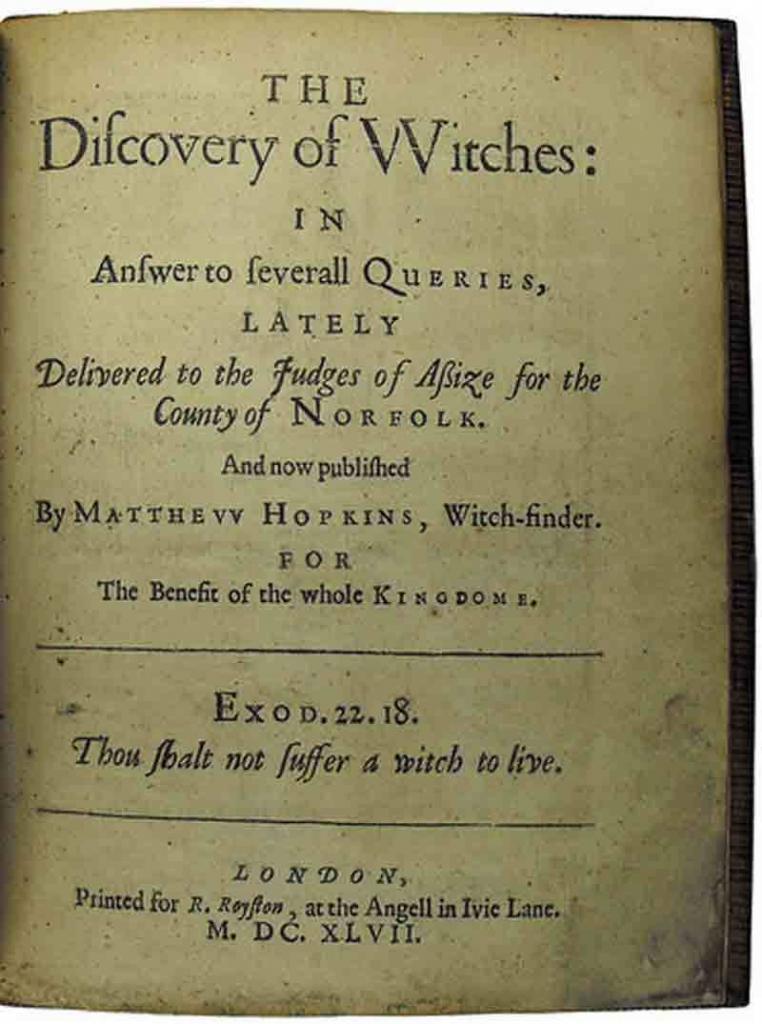
The Discovery of Witches is available as a free download from Project Guttenberg.
5. Vincent Price wasn’t the first choice to play Matthew Hopkins
Tenser originally wanted Boris Karloff, but the veteran actor’s ill health put a stop to that idea. Reeves, meanwhile, wanted Donald Pleasance.
However, the film’s US backers, American International Pictures, insisted on using 56-year-old Price (who was actually 31 years older than the real-life Hopkins) as part of his ongoing contract with the company.
6. It’s a classic Western revenge tale transplanted to 17th-century rural England
The script of Witchfinder General (the film) draws comparisons to the classic 1950s Westerns, Rancho Notorious and The Searchers.
Witchfinder General revolves around a Roundhead soldier Richard Marshall (Ian Ogilvy), called Ralph Margery in the novel, who returns from the front to find his virginal fiancé Sara (Hilary Dwyer) violated by Hopkins and his gang (of outlaws), and Sara’s uncle John Lowes (Rupert Davis) tortured and drowned.
Swearing revenge, Richard packs off Sara to the safety of the town of Lavenham before setting off to hunt Hopkins down.
7. It makes great use of some authentic locations
The film was shot at some of the actual places where the Hopkins and Stearne plied their trade; including the medieval market towns of Kersey and Lavenham in Suffolk, where the hanging and burning scenes were shot.
Nearby, in Long Melford, the Tudor mansion of Kentwell Hall was used for the ‘ducking’ sequence, while Rushford Church in Norfolk is where Richard and Sara make their vows.
Orford Castle, on the Suffolk coast, provided a suitably imposing – and very Gothic horror – backdrop for the film’s bloody final scenes.
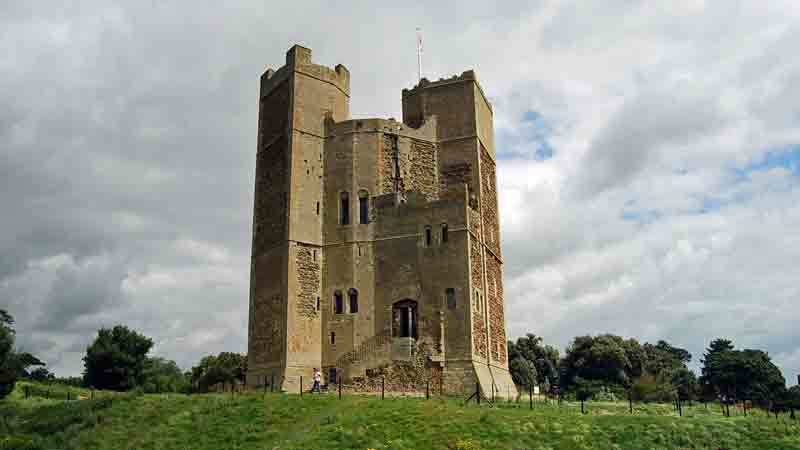
8. Despite the unflinching violence, it’s a beautiful piece of cinema
This was due to cinematographer John Coquillion, a Canadian-born former documentary filmmaker whose naturalistic style gave Reeves’ compositions a sweepingly epic quality despite the modest budget.
Coquillon went on to film a number of AIP films before making his best work with Sam Peckinpah’s Straw Dogs.
9. It’s Vincent Price’s best ever role in a horror
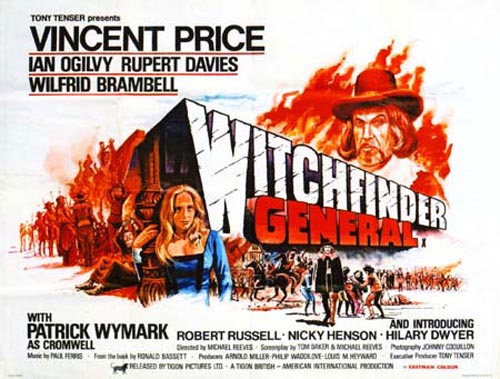
Reeves was determined to reign in the actor’s trademark campy style, which caused him and his star to clash big time, with Price reputedly shouting at Reeves who was nagging him to stop ‘rolling his eyes’: ‘Young man – I’ve made 97 films. What have you done?’, whereupon Reeve’s retorted, ‘Two good ones.’
Price finally ditched the ham to give a more realistic and restrained performance.
On seeing the final cut, Price declared it to be one of the best performances he had ever given.
This legendary battle of wits was turned into a 2010 BBC radio play, Vincent Price and the Blood Beast Terror, with Nickolas Grace playing the horror legend.
10. Robert Russell’s John Stearne outdoes Price’s Hopkins for vileness
It may be Vincent Price’s film, but Robert Russell, who plays underling John Stearne, shouldn’t be overlooked.
As the sociopath who butchers for profit, Russell is pretty solid in the role. However he ended up being dubbed by Jack Lynn, who also plays an innkeeper, as his voice was too high pitched for playing such a vile creature.
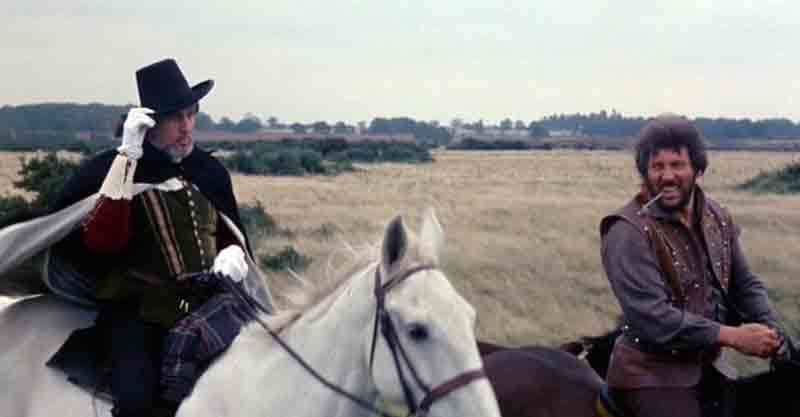
The real John Stearne, however, was a family man and landowner, who ended up retiring to his farm following Hopkins’ death, where he wrote a book, A Confirmation and Discovery of Witchcraft.
11. Ian Ogilvy appears in all three of Reeves’ films
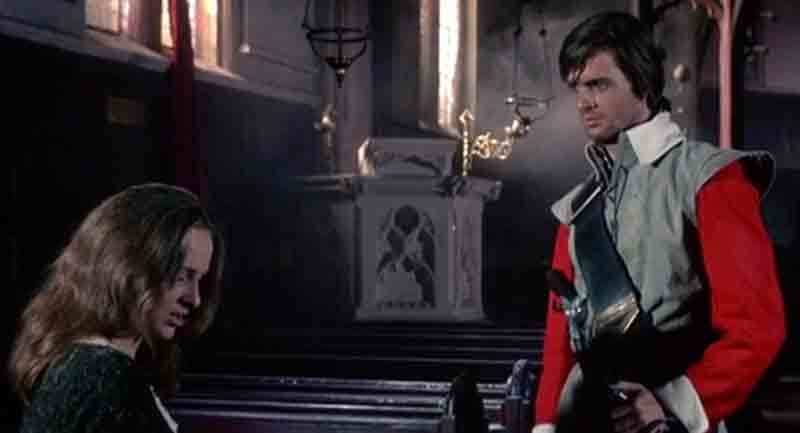
Ogilvy was a childhood friend of Michael Reeves.
They met when they were 15 and started making movies together.
Ogilvy, who now resides in the US, said of Reeves: ‘Michael always felt comfortable with people he knew – he liked to have a repertory of people that he used to use all the time, and I was the main one, I was his leading man’.
12. It was heavily censored because of its grim violence
On 22 October 2001, the BBFC finally passed the film uncut.
But it took its time.
When Britain’s notoriously fussy censor John Trevelyan saw the rough cut he didn’t think it problematic.
But the added sound and music effects only heightened the horror, to the extent that he threatened to withhold the film completely.
Even despite the cuts there were howls of protests from some local authorities in Britain, which only made Tenser use the controversy to drum up business: ‘The film they tried to ban’ declared the ads.
In the end, the film grossed over $10m in the US alone.
13. It’s taken years for the film to be shown as Michael Reeves intended.
Because of censorship laws, missing footage, musical rights issues and the questionable quality of the many theatrical prints, the release of a definite version took decades.
In 2011, Odeon Entertainment (now Screenbound) released a Blu-ray which used the 2007 MGM HD transfer to present the film completely uncut, but also included Price’s US narration and the nudie sequences as extras, making this the definitive release of the film to date.
14. Witchfinder General was called The Conqueror Worm in the US
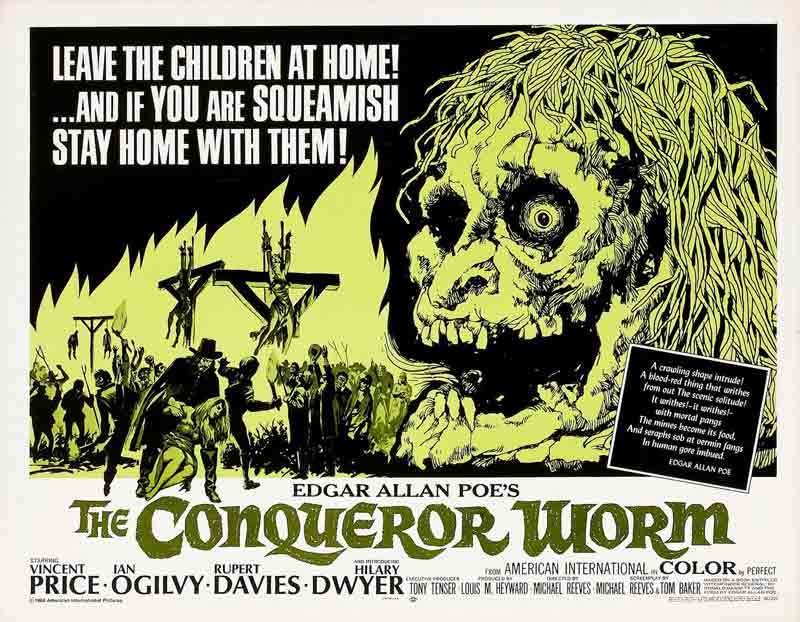
Louis ‘Deke’ Heyward, who headed up AIP’s European operations in London, made the decision to hook it to AIP’s long-running Edgar Allan Poe cycle by having Price read a couple of stanza from Poe’s 1843 poem, The Conqueror Worm, over the opening and closing credits. It was a decision that horrified Reeves.
15. Director Michael Reeves didn’t commit suicide after making the film
Michael Reeves was poised to have a great career ahead of him, but died, aged 25, on 11 February 1969 while working on his next film, The Oblong Box, again starring Vincent Price.
Suffering from depression and insomnia, Reeves was undergoing medical treatment at the time. While many assume suicide from a barbiturate overdose, the coroner’s report ruled his death accidental.
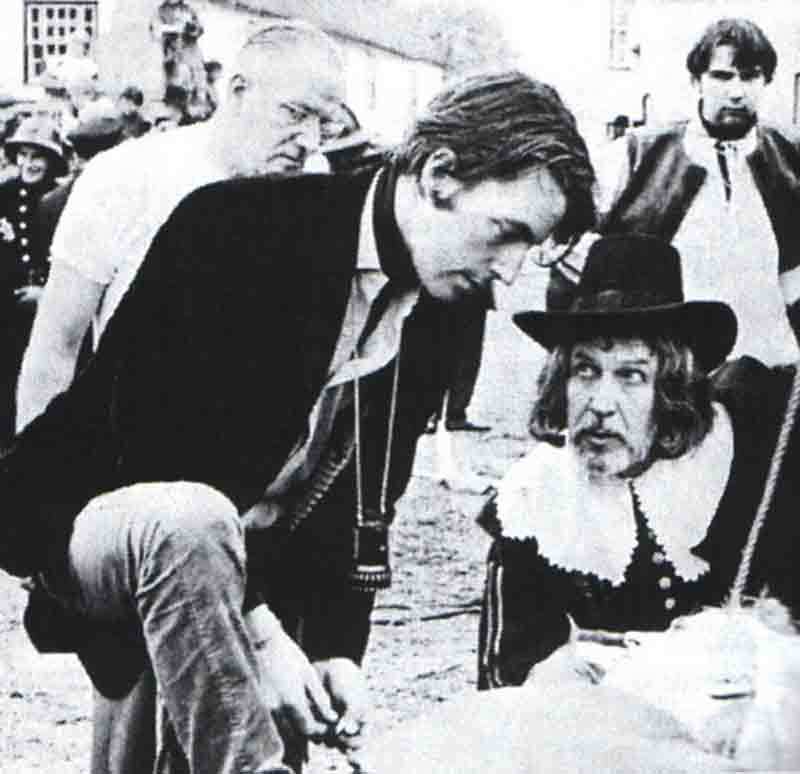
16. Paul Ferris’ orchestral score is legendary
In 2013, a CD featuring the full score of Ferris’ rustic folk-inspired masterpiece was released by De Wolfe.
His pastiche on Greensleeves is one of the most memorable musical pieces and ended up, along with some other tracks, on De Wolfe’s library album, Strange Location (DW/LP 3150), attributed to the London Studio Orchestra – alongside Peter Knight’s Curse of the Crimson Altar score.
Ferris can be glimpsed in the film as a distraught husband billed as Morris Jar, an in-joke on his favourite composer, Maurice Jarre.
Ferris died in 1995 aged 54 after a long battle with Huntington’s Chorea.
17. Wilfrid Bramble gets a humorous cameo
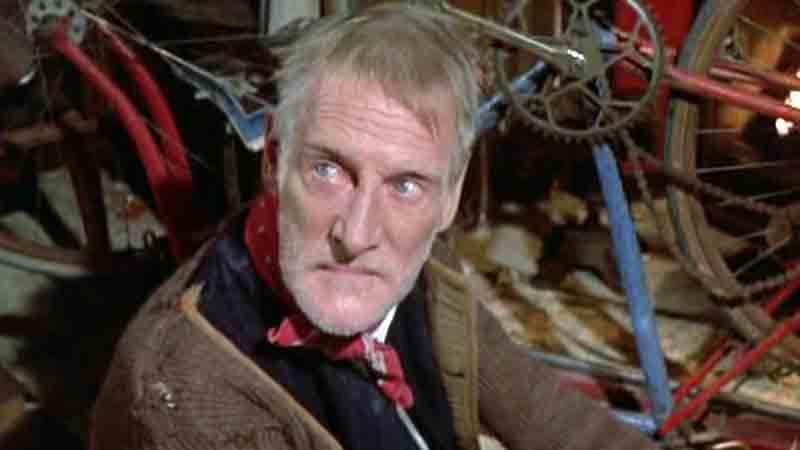
Best known as Alfred in BBC’s classic 1960s TV series, Steptoe & Son, comic actor Bramble got to channel his famous ‘dirty old man’ character as a gurning horse trader in one scene, where he remarks: ‘So you’re a witchfinder eh? Oooh! That’s nice!’
18. The notorious ending was improvised
It was intended for Price’s Hopkins to be thrown into a vat of flaming coals.
But due to Price being booked to start work on the Broadway musical, Darling of the Day, a new ending was worked out with Nicky Henson shooting Hopkins with his flintlock as Ogilvy’s Richard takes a fatal axe to his nemesis.
19. Extras on the film were paid just £1 a day
For the film’s major witch burning scene, shot in the town square at Lavenham, entire families of the US air force stationed at Lakenheath airfield were brought in as extras, and paid just £1 a day.
To hire the square for the shoot, a token donation of £30 was paid to the local school playing field fund.
20. A series of Witchfinder films followed in its wake
Following its success, Witchfinder General spawned a number of Euro horrors including Mark of the Devil, The Bloody Judge and Hexen geschändet und zu Tode gequält.
In 1971, Tigon’s own The Blood on Satan’s Claw continued the vogue for English folk horror, which reached its apex with 1973’s The Wicker Man.
